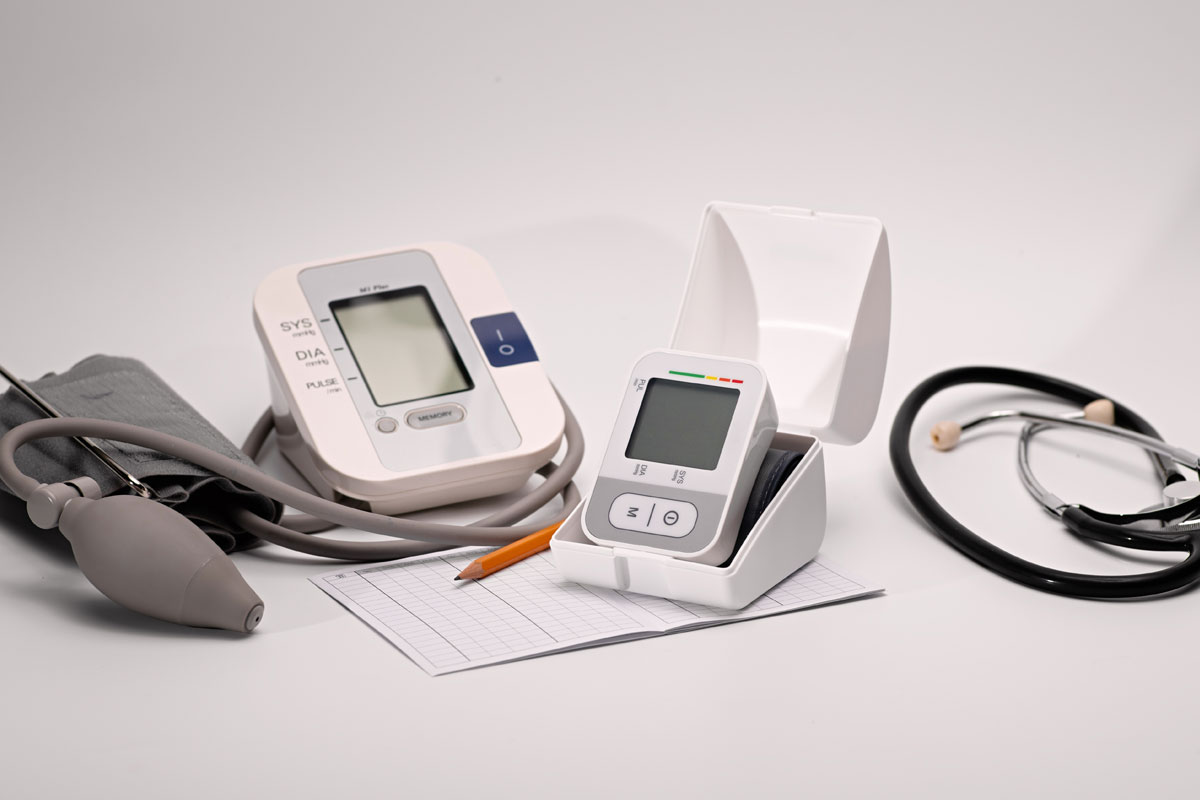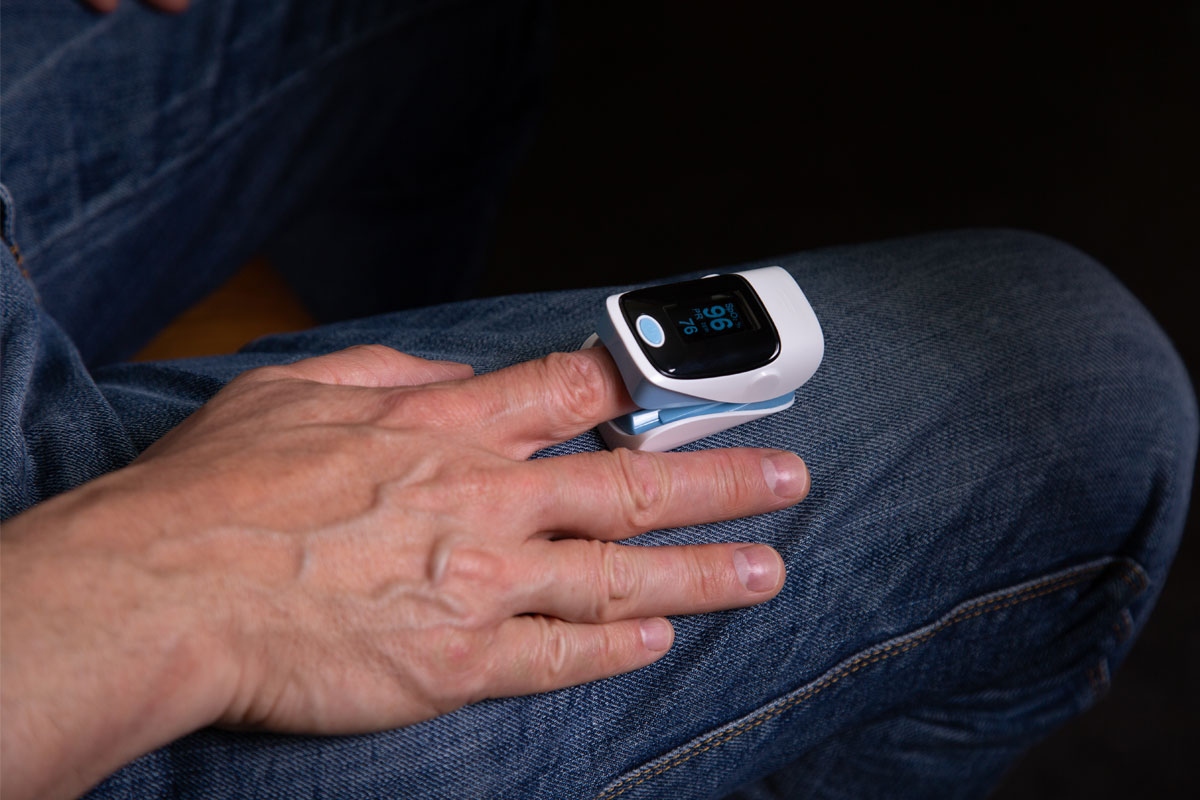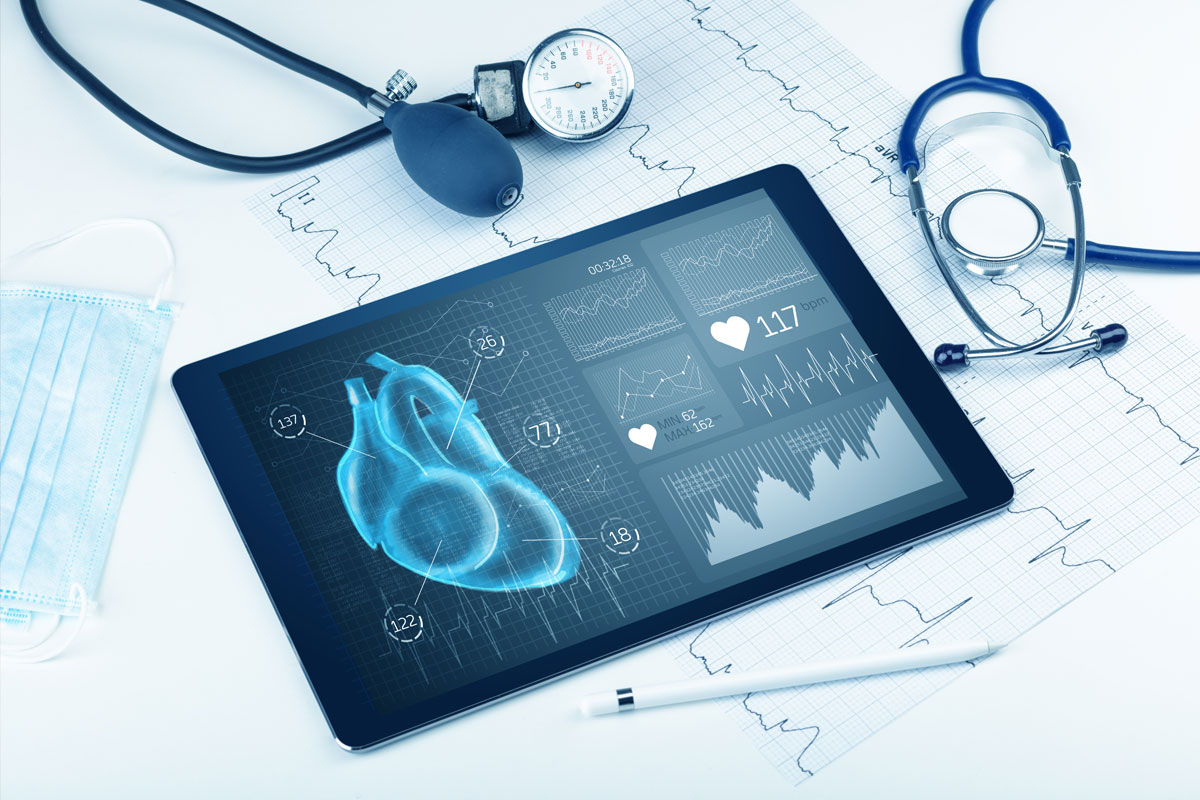
In recent years, the healthcare industry has experienced a mind-numbing transformation due to the convergence of technologies such as artificial intelligence (AI), the Internet of Things (IoT), and advanced connectivity. These advancements have paved the way for innovative digital healthcare solutions, particularly in remote patient and therapeutic monitoring.
According to Bloomberg1, the global digital health market is expected to reach $1.5 trillion (about $4,600 per person in the US) by 2030 due to improved and wider internet coverage, growing chronic disease prevalence, increasing smart device adoption, and a higher demand for virtual care. Moreover, a recent report2 published by Grand View Research says that the global patient monitoring device industry will witness a double-digit compound annual growth rate (CAGR) from now to 2030.
In this blog, we will explore how the confluence of these technologies is revolutionizing mainstream healthcare, focusing on the unique digital products and applications that are reshaping the landscape.
The Rise of Digital Healthcare
Digital healthcare encompasses a wide range of technologies and solutions to improve patient outcomes, increase access to care, and reduce healthcare costs. By leveraging AI, IoT, and advanced connectivity, healthcare providers can monitor patients remotely and provide personalized care, ensuring timely interventions and improved overall management. Additionally, remote patient monitoring offers exciting opportunities for providers and promises to transform how patients and practitioners approach healthcare, from diagnosis and treatment to doctor and patient consultations.
Digital Monitoring Devices for Remote Patient Care
Digital Stethoscopes
Traditionally used for listening to the internal sounds of the body – or “auscultation” –, stethoscopes have undergone a digital reinvention. Unlike analog stethoscopes, digital stethoscopes offer enhanced audio quality, noise reduction, cancellation capabilities, and Bluetooth® compatibility to connect to hearing aids and other listening devices. They enable remote physicians to listen to patients’ heart and lung sounds in real-time, diagnose conditions accurately, and provide guidance. Products such as Eko Core’s digital stethoscopes incorporate AI to detect heart murmurs and anomalies with high precision, along with wireless listening and telehealth capabilities.

Blood Oxygen Saturation Tracking
Digital oximeters provide a convenient way to monitor blood oxygen saturation levels, an essential parameter for assessing respiratory function. With wireless connectivity, these devices can transmit data to healthcare providers, enabling them to remotely monitor patients’ oxygen levels and detect potential respiratory issues promptly. For example, Masimo’s MightySat Rx Fingertip Pulse Oximeter with Bluetooth® Low Energy is an easy-to-use, noninvasive device that measures and displays arterial oxygen saturation (SpO2), Pulse Rate (PR), and Perfusion Index (Pi). The MightySat enables monitoring patients’ oxygen levels, facilitating early detection of respiratory complications.
Respiratory and Blood Pressure Tracking
Digital tracking devices for respiratory and blood pressure are designed to monitor and manage chronic respiratory conditions and hypertension remotely. IoT-enabled devices can collect data on patients’ breathing patterns, respiratory rates, and blood pressure, providing valuable insights for healthcare professionals to make informed decisions about medication adjustments and interventions.
For respiratory tracking, Propeller Health’s digital platform utilizes sensors attached to inhalers, which passively capture and transmit data via Bluetooth or hub connection on medication usage, respiration, and environmental factors, enabling personalized asthma management. For remote blood pressure tracking, Withings Health Solutions’ BPM Connect is a Wi-Fi® blood pressure and heart rate monitor that automatically shares measurements with doctors and medical professionals and is FDA-approved.
Cardiac Care Devices
Digital cardiac care devices, such as wearable ECG monitors, allow for continuous heart rhythm monitoring and early detection of irregularities. Devices such as AliveCor’s KardiaMobile EKG allow patients to capture and share their medical-grade EKG readings with healthcare providers, facilitating remote diagnosis and management of cardiac conditions.
Realizing the Benefits
Improved Access to Care
Digital monitoring devices eliminate geographical barriers, allowing patients in remote areas or with limited mobility to receive high-quality healthcare remotely. Indeed, medical wearables – combined with effective treatment protocols – can help improve quality of life, reduce costs, keep patients out of expensive in-hospital care, and allow them to maintain independence and be at home.
Enhanced Patient Engagement and Empowerment
Digital monitoring devices empower patients to actively participate in their healthcare journeys. By providing access to real-time data about their health, patients can make informed decisions, manage chronic conditions more effectively, and adhere to treatment plans with greater confidence and independence.
Cost Savings and Efficiency
Remote patient and therapeutic monitoring can significantly reduce healthcare costs by minimizing hospital readmissions, emergency room visits, and unnecessary appointments. Furthermore, it can prevent complications, reduce treatment durations, and optimize healthcare resource allocation. As a result, routine checks are much easier and quicker, and there is less need for physical in-person checkups, visits to the emergency department, and hospitalization. Combining remote patient monitoring and electronic health records could save the healthcare industry as much as $700 billion3 within the next 20 years while lowering the risk of manual data collection and management errors.

How Ambiq Contributes
The merging of AI, IoT, and advanced connectivity is revolutionizing the healthcare industry, with digital monitoring devices playing a pivotal role in transforming patient care. As we continue to witness advancements in digital healthcare, it is crucial for healthcare providers and policymakers to embrace these technologies and leverage their potential to deliver efficient, accessible, and patient-centered care.
Smart IoT devices count on reliable and ultra-low-energy components for a seamless user experience. Additionally, their processors must be optimized to perform these tasks on a low electric charge.
Ambiq® system-on-chips (SoCs) such as the Apollo4 Lite and Blue Lite are playing an increasingly pivotal role in powering an array of products related to remote patient or therapeutic monitoring. Through our advanced Sub-threshold Power Optimized Technology (SPOT®) platform, Ambiq has helped many leading manufacturers worldwide create products that can operate for days, months, and sometimes years on a lithium battery or a single charge.
1 Digital Health Market to Hit $1.5 Trillion by 2030: Grand View Research, Inc. | October 14, 2022
3 Global Cardiac Remote Patient Monitoring Device Market to Surpass US$ 680 Million by 2028, Says Coherent Market Insights (CMI) | February 8, 2022


